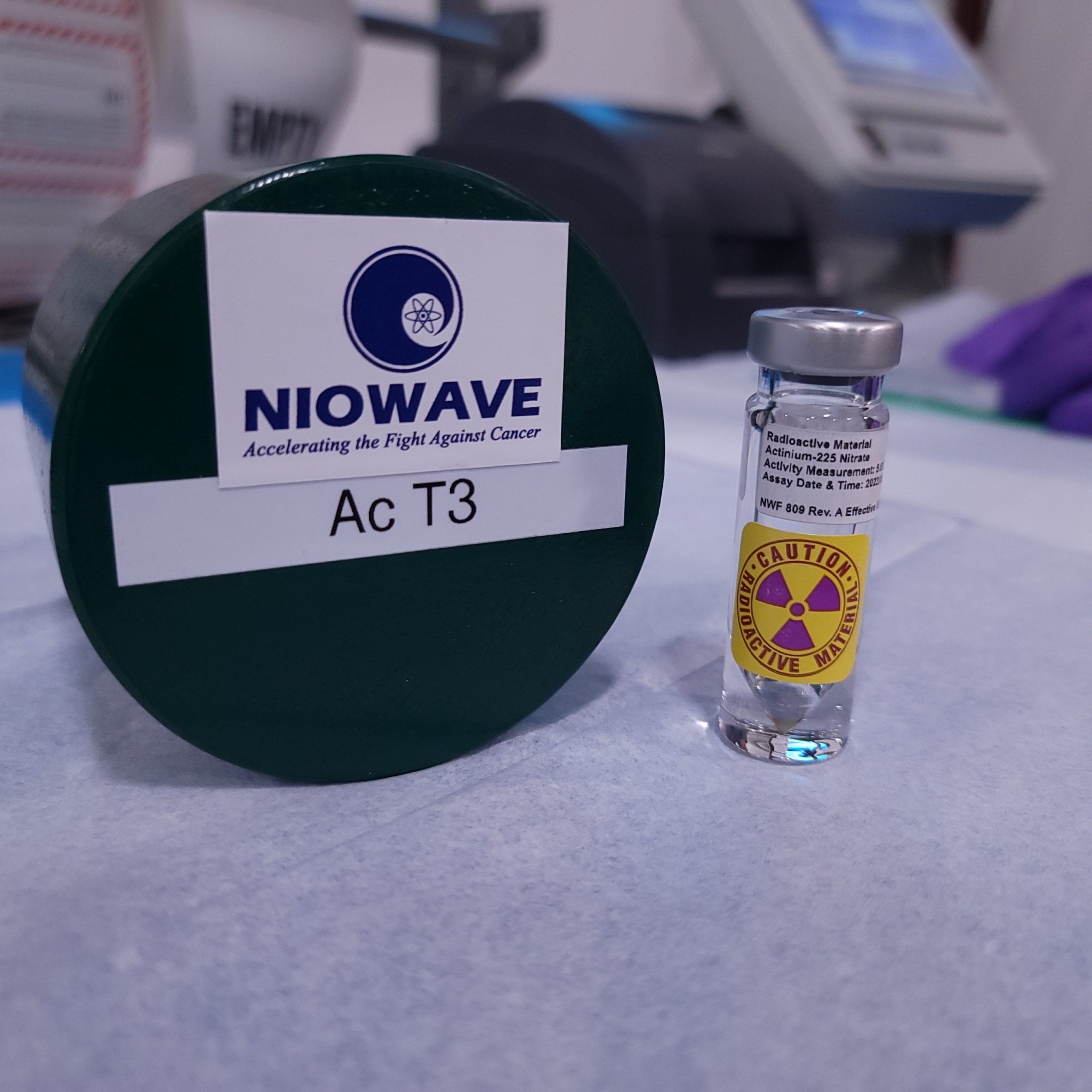
Alpha Emitters
Alpha particles, made up of two protons and two neutrons, are ejected by certain kinds of radioisotopes when they decay. They travel tiny distances inside the body and deposit large amounts of energy, making them ideal cancer-fighting tools. One promising alpha-emitter is an isotope of the element actinium, Ac-225. Until recently, there has not been enough of this substance available for the clinical trials needed to prove out its effects and to test the radiopharmaceuticals which deliver the actinium to the site of the cancer.
Niowave is operating a closed-loop cycle to domestically produce high-purity Ac-225 and other alpha emitters from Ra-226 using a superconducting electron linear accelerator. The electron beam impinges on a photon converter to irradiate the Ra-226, inducing a photon-neutron reaction to Ra-225, which decays to Ac-225. Ac-225 is eluted continuously from the target vessel then centrifugal contactors are used to harvest and purify Ac-225 through a separation cascade. Unlike other production methods, including proton linacs (spallation of Th-232) and proton cyclotrons (Ra-226 bombardment), Niowave’s method does not generate significant amounts of Ac227 contamination in the Ac-225 product. Niowave’s superconducting linacs can handle higher production output (>500 Ci per year using a 20 MeV, 210 kW beam) than any other method. Demonstration-scale production of Ac-225 at Niowave began in 2019, putting Niowave in a unique position to quickly take the lead in manufacturing alpha-emitters for cancer therapy.
Alpha Emitters
Alpha particles, made up of two protons and two neutrons, are ejected by certain kinds of radioisotopes when they decay. They travel tiny distances inside the body and deposit large amounts of energy, making them ideal cancer-fighting tools. One promising alpha-emitter is an isotope of the element actinium, Ac-225. Until recently, there has not been enough of this substance available for the clinical trials needed to prove out its effects and to test the radiopharmaceuticals which deliver the actinium to the site of the cancer.
Niowave is operating a closed-loop cycle to domestically produce high-purity Ac-225 and other alpha emitters from Ra-226 using a superconducting electron linear accelerator. The electron beam impinges on a photon converter to irradiate the Ra-226, inducing a photon-neutron reaction to Ra-225, which decays to Ac-225. Ac-225 is eluted continuously from the target vessel then centrifugal contactors are used to harvest and purify Ac-225 through a separation cascade. Unlike other production methods, including proton linacs (spallation of Th-232) and proton cyclotrons (Ra-226 bombardment), Niowave’s method does not generate significant amounts of Ac227 contamination in the Ac-225 product. Niowave’s superconducting linacs can handle higher production output (>500 Ci per year using a 20 MeV, 210 kW beam) than any other method. Demonstration-scale production of Ac-225 at Niowave began in 2019, putting Niowave in a unique position to quickly take the lead in manufacturing alpha-emitters for cancer therapy.


